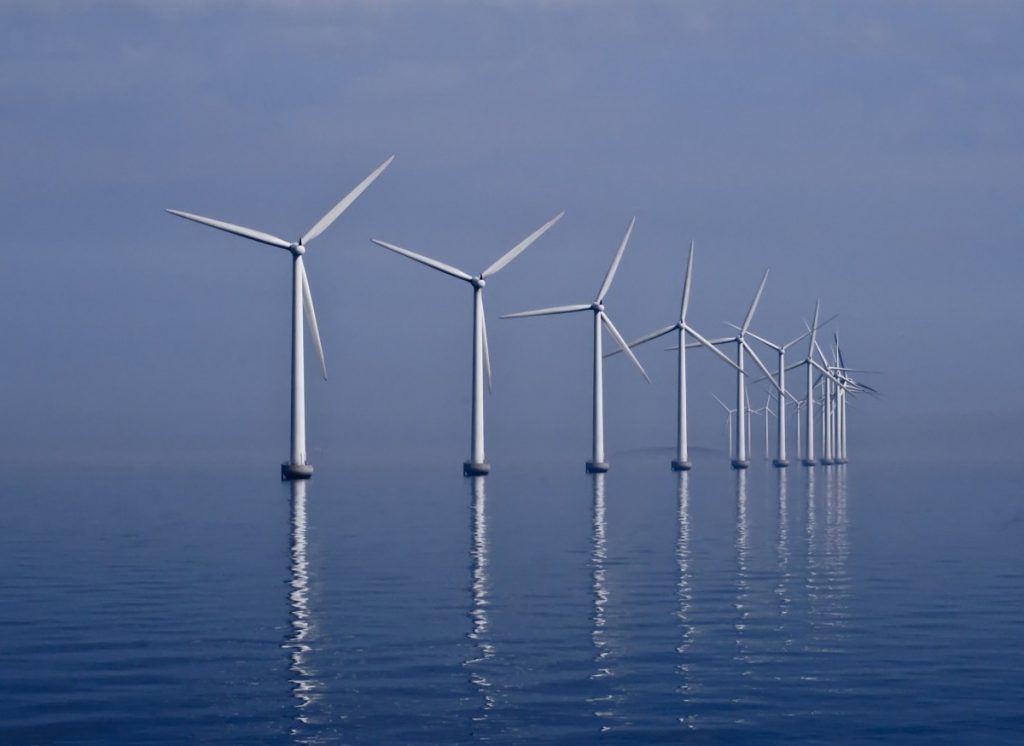
On March 27, New England’s renewable energy future took a big step forward. Proposals for nearly 5,500 megawatts of offshore wind power were submitted by four developers following a joint request for proposals from Connecticut, Rhode Island, and Massachusetts. With Connecticut’s promise of a zero-carbon grid by 2040, offshore wind could be the key to meeting our climate goals.
Offshore wind is a renewable energy source with tremendous potential. Unlike solar, wind can generate electricity at any time of day, and it varies based on the wind speed. Wind over the ocean is often stronger and more consistent than over land, making offshore wind a reliable energy source that doesn’t pollute the air and avoids greenhouse gas emissions. With its relatively shallow waters, strong wind profile, and proximity to large population centers, the Outer Continental Shelf off the northeast’s coast is an ideal location for offshore wind development.

Connecticut’s first foray into offshore wind in 2018 resulted in an agreement to purchase 304 MWs of capacity from the Revolution Wind project (Rhode Island procured 403 MWs from that same project). This project will begin staging, from New London State Pier in southeast Connecticut, and construction shortly. In 2019, Connecticut was authorized to purchase 2,000 MW of offshore wind power, but six months ago, some of the region’s largest offshore wind developers pulled out of their New England-based projects due to rising costs brought on by the Covid 19 pandemic and Russia’s invasion of Ukraine. One of those projects, Beacon Wind, which was planning on running a transmission cable through Long Island Sound for power delivery to New York, has been suspended indefinitely.
To help promote economies of scale and lower the cost for developers, Connecticut, Massachusetts, and Rhode Island teamed up to solicit new proposals for up to 6,800 MW in October 2023. Those proposals are now in, and include rebids of many of the initial projects.
The proposals came from four developers and totaled 5,455 MW of power across the three states. Orsted was the only developer to submit a Connecticut/Rhode Island-specific proposal, Starboard Wind, which would generate 11,84 MW for Connecticut and/or Rhode Island, using the State Pier in New London as a staging ground to build the turbines. Orsted says this project would create 800 jobs and power 600,000 homes.
Avangrid submitted a rebid of its former Park City Wind project, now renamed New England Wind 1. Because progress had already begun when they pulled out, most permits are already secured, and Avangrid says they would be ready to start construction next year. Once finished, New England Wind 1 would generate 791 MW as early as 2029. Avangrid says the proposal would offer emissions savings equivalent to taking 300,000 gas cars off the road. Though construction would take place elsewhere, permanent operations and maintenance jobs would be based out of Bridgeport, CT, an economically-depressed area that will benefit significantly from clean energy jobs. Avangrid submitted a second proposal for New England Wind 2, a rebid of the 1080 MW Commonwealth Wind. Combined, New England Wind 1 and 2 would create 9,200 jobs for the region. With the permitting already underway, Avangrid calls these two projects among the most mature offshore wind ventures in the U.S.
Vineyard Offshore previously partnered with Avangrid to develop Vineyard 1, the nation’s first commercial offshore wind project. The Vineyard Wind 2 proposal was accompanied by over 200 letters of support from local officials and stakeholders, including a noteworthy tribal benefit agreement that was recently signed with the Mashpee Wampanoag Tribe, and would build tribal capacity to engage with offshore wind. The project would generate 1200 MW, powering 650,000 homes starting in 2031, and avoiding 2.1 million tons of CO2 emissions per year. Vineyard 1 would be constructed and operated out of Massachusetts and Rhode Island, with a grid interconnection point in Montville, CT.
The final proposal came from South Coast Wind, which rebid a 1,200 MW project serving Massachusetts and Rhode Island.
Also helping to mitigate higher costs is the recent assurance from the Biden Administration that offshore wind projects will be eligible for federal tax credits through the Inflation Reduction Act, including an additional ten percent bonus if projects include work in energy communities, or areas like New London, which have historically had a lot of power generation industry.
Though we won’t know until August which proposals are accepted, this boom in activity could make New England a national leader in offshore wind, bringing us closer to our renewable energy goals.
